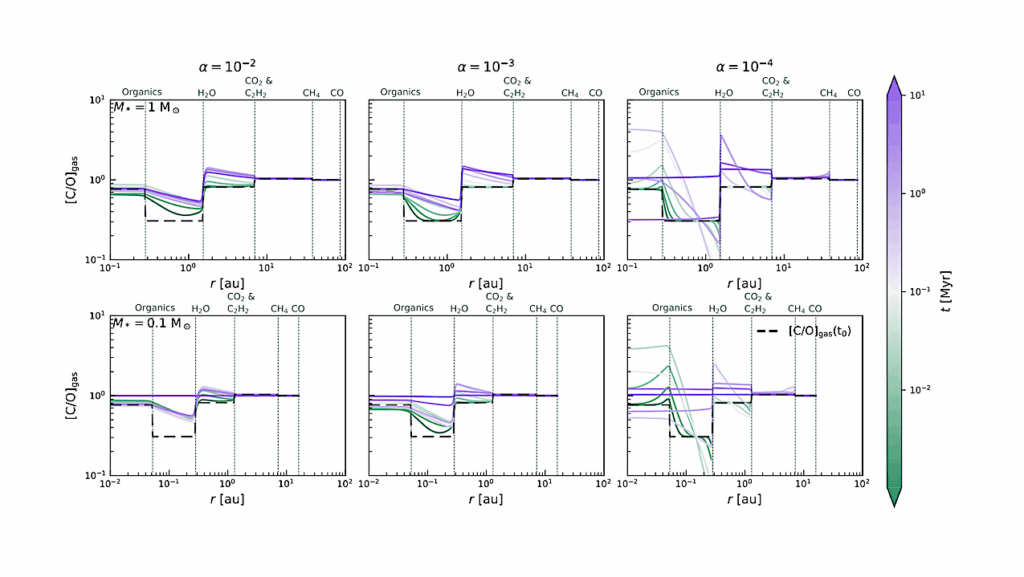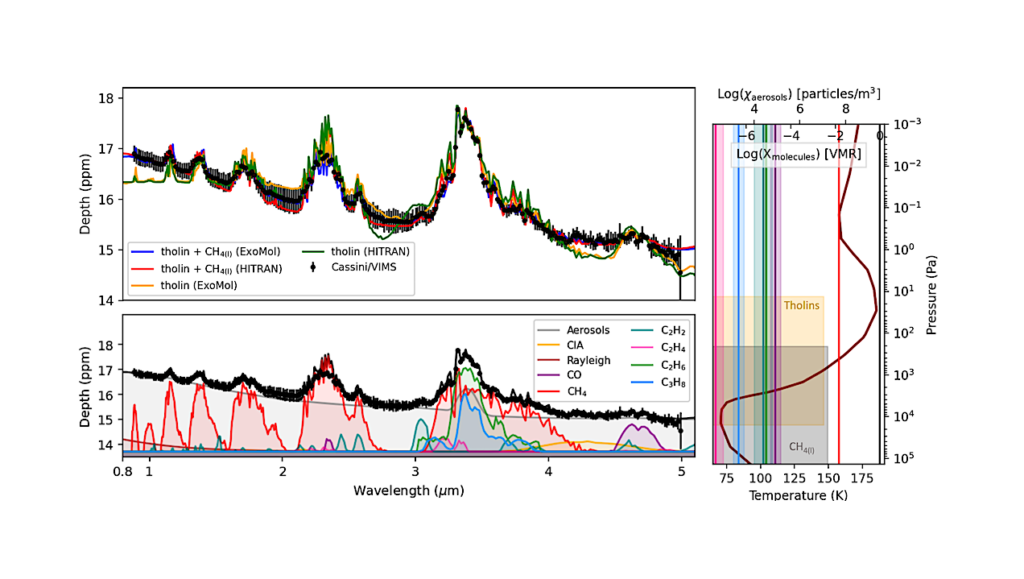Chemists Recreate How RNA Might Have Reproduced For The First Time
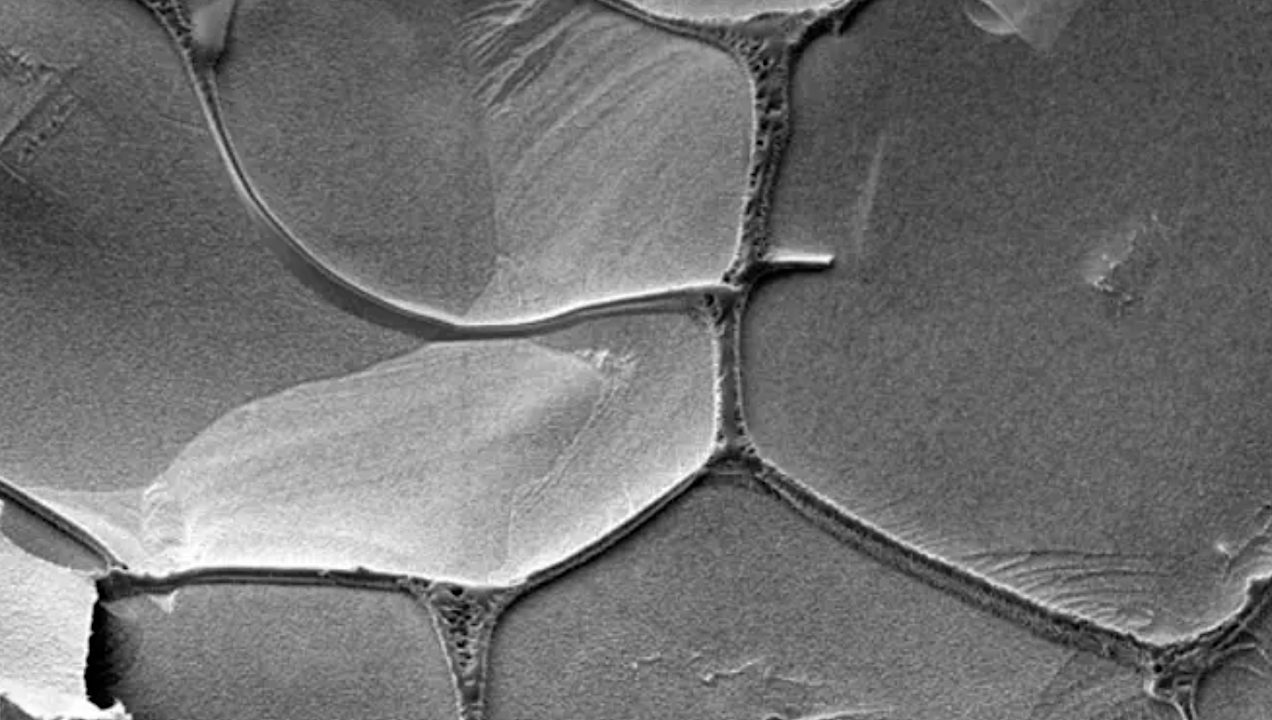
Chemists at UCL and the MRC Laboratory of Molecular Biology have demonstrated how RNA (ribonucleic acid) might have replicated itself on early Earth – a key process in the origin of life.
Scientists believe that, in the earliest life forms, genetic material would have been carried and replicated by strands of RNA, before DNA and proteins later emerged and took over.
Yet getting strands of RNA to replicate in the lab in a simple way – i.e., that plausibly could have occurred at the outset of life – has proved challenging. RNA strands zip up into a double helix that blocks their replication. Like velcro, these are hard to pull apart and quick to stick back together, leaving no time to copy them.
In a study described in Nature Chemistry, researchers overcame this problem by using three-letter “triplet” RNA building blocks in water and adding acid and heat, which separated the double helix. They then neutralised and froze the solution. In liquid gaps between the ice crystals, they saw that the triplet building blocks coated the RNA strands and stopped them from zipping back together – allowing replication to happen.
By thawing and beginning the cycle again, repeated changes in pH and temperature – which could plausibly occur in nature – allowed the RNA to replicate over and over again, with strands of RNA long enough to have a biological function and play a role in the origin of life.
Dr Philipp Holliger (MRC Laboratory of Molecular Biology), who led the study, said: “Life is separated from pure chemistry by information, a molecular memory encoded in the genetic material that is transmitted from one generation to the next. For this process to occur, the information must be copied, i.e. replicated, to be passed on.”
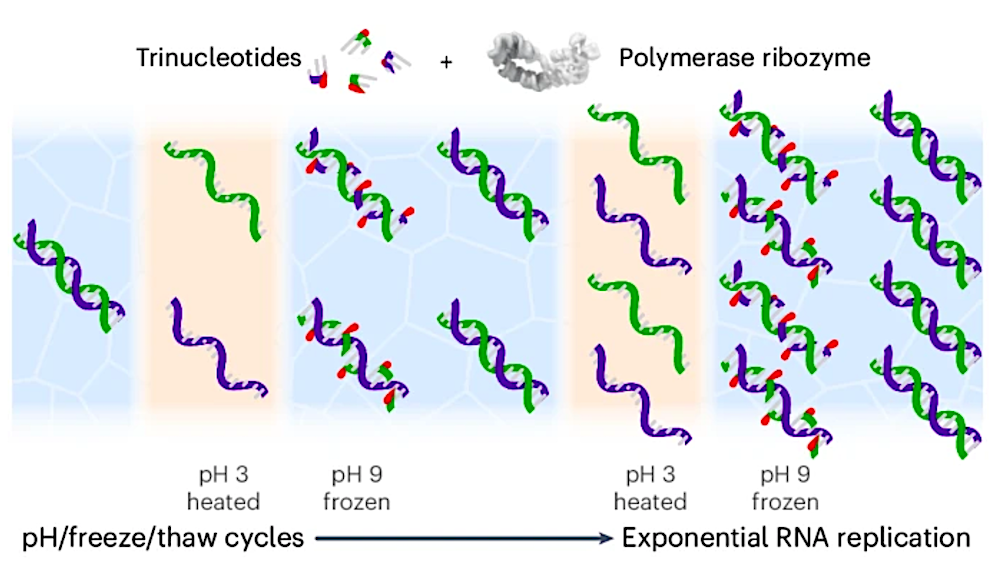
RNA replication is considered a key process in the origins of life. However, both enzymatic and non-enzymatic RNA replication cycles are impeded by the ‘strand separation problem’, a form of product inhibition arising from the extraordinary stability of RNA duplexes and their rapid reannealing kinetics. Here we show that RNA trinucleotide triphosphates can overcome this problem by binding to and kinetically trapping dissociated RNA strands in a single-stranded form, while simultaneously serving as substrates for replication by an RNA polymerase ribozyme. When combined with coupled pH and freeze–thaw cycles, this enabled exponential replication of both (+) and (−) strands of double-stranded RNAs, including a fragment of the ribozyme itself. Subjecting random RNA sequence pools to open-ended replication yielded either defined replicating RNA sequences or the gradual emergence of diverse sequence pools. The latter derived from partial ribozyme self-replication alongside generation of new RNA sequences, and their composition drifted towards hypothesized primordial codons. These results unlock broader opportunities to model primordial RNA replication. — Nature Chemistry
Lead author Dr James Attwater (UCL Chemistry and the MRC Laboratory of Molecular Biology) said: “Replication is fundamental to biology. In one sense, it is why we are here. But there’s no trace in biology of the first replicator.
“Even the single-celled organism that is the ancestor of all known life, the Last Universal Common Ancestor (LUCA), is a pretty complex entity, and behind it lies a lot of evolutionary history that is hidden from us.
“Our best guess is that early life was run by RNA molecules. But a big problem for this hypothesis is that we haven’t been able to get a molecule of RNA to replicate itself in a way that could have occurred before life began several billion years ago.
“We can’t rely on a complex enzyme to do this, as happens in biology today. It needs to be a much simpler solution. The changing conditions we engineered can occur naturally, for instance with night and day cycles of temperature, or in geothermal environments where hot rocks meet a cold atmosphere.
“The triplet or three-letter building blocks of RNA we used, called trinucleotides, do not occur in biology today, but they allow for much easier replication. The earliest forms of life are likely to have been quite different from any life that we know about.
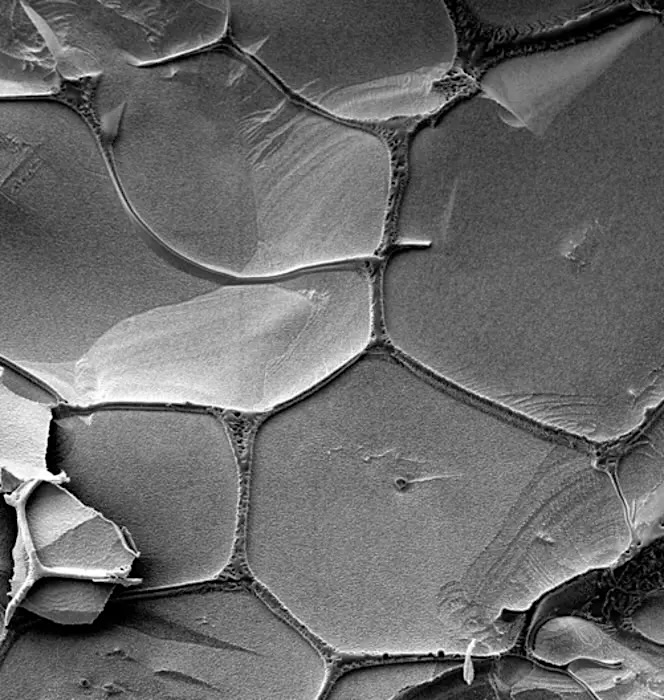
Liquid brine veins, where RNA molecules can replicate, surround solid ice crystals in water ice, as seen with an electron microscope. Credit Philipp Holliger, MRC LMB
“The models of biological species we are trying to build need to be simple enough to have emerged from the chemistry of early Earth.”
While the paper focuses solely on the chemistry, the research team said the conditions they created could plausibly mimic those in freshwater ponds or lakes, especially in geothermal environments where heat from inside the Earth has reached the surface.
However, this replication of RNA could not occur in freezing and thawing saltwater, as the presence of salt interferes with the freezing process and prevents RNA building blocks from reaching the concentration required to replicate RNA strands.
While a high concentration of RNA can also occur through evaporation, for instance a puddle evaporating in hot temperatures, RNA molecules are unstable at higher temperatures and more likely to break down, the researchers said.
The origin of life does not likely lie with RNA alone, but is thought to have emerged out of a combination of RNA, peptides (short chains of amino acids that are the building blocks of proteins), enzymes, and barrier-forming lipids that can protect these ingredients from their environment.
Several researchers at UCL and the MRC Laboratory of Molecular Biology (LMB) are uncovering clues about how life began. In recent years, teams led by Dr John Sutherland (LMB) and Professor Matthew Powner (UCL Chemistry) have demonstrated how chemistry could create many of the key molecules of life’s origin, including nucleotides (the building blocks of RNA and DNA), amino acids and peptides (the building blocks of proteins), simple lipids and precursors to some of the vitamins, from simple molecular building blocks likely abundant on the early Earth.
The latest study was supported by the Medical Research Council (MRC), part of UK Research and Innovation (UKRI), as well as the Royal Society and the Volkswagen Foundation.
Trinucleotide substrates under pH–freeze–thaw cycles enable open-ended exponential RNA replication by a polymerase ribozyme, Nature Chemistry (open access)
Astrobiology


